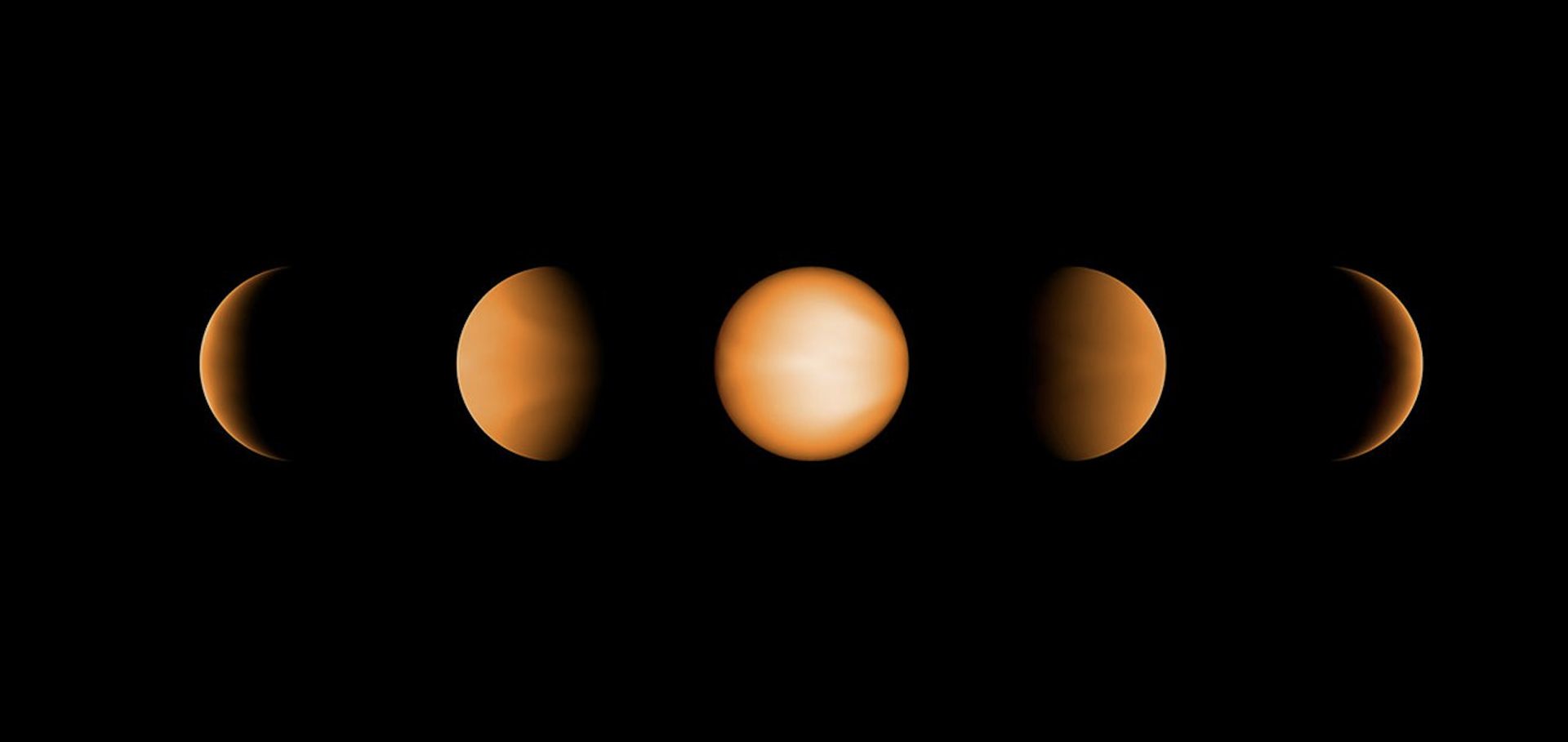3D mixing in hot Jupiter atmospheres. I. application to the day/night cold trap in HD 209458b
Astronomy and Astrophysics EDP Sciences
Abstract:
Hot Jupiters exhibit atmospheric temperatures ranging from hundreds to thousands of Kelvin. Because of their large day-night temperature differences, condensable species that are stable in the gas phase on the dayside, such as TiO and silicates, may condense and gravitationally settle on the nightside. Atmospheric circulation may counterbalance this tendency to gravitationally settle. This three dimensional (3D) mixing of chemical species has not previously been studied for hot Jupiters, yet it is crucial to assess the existence and distribution of TiO and silicates in the atmospheres of these planets. We perform 3D global circulation models of HD209458b including passive tracers that advect with the 3D flow, including a source/sink on the nightside to represent condensation and gravitational settling of haze particles. We show that global advection patterns produce strong vertical mixing that can keep condensable species lofted as long as they are trapped in particles of sizes of a few microns or less on the night side. We show that vertical mixing results not from small-scale convection but from the large-scale circulation driven by the day-night heating contrast. Although this vertical mixing is not diffusive in any rigorous sense, a comparison of our results with idealized diffusion models allows a rough estimate of the vertical diffusion coefficient. Kzz=5x10**4/Sqrt(Pbar) m2/s can be used in 1D models of HD 209458b. Moreover, our models exhibit strong spatial and temporal variability in the tracer concentration that could result in observable variations during transit or secondary eclipse measurements. Finally, we apply our model to the case of TiO in HD209458b and show that the day-night cold trap would deplete TiO if it condenses into particles bigger than a few microns on the planet's night side, making it unable to create the observed stratosphere of the planet.A non-grey analytical model for irradiated atmospheres. II: Analytical vs. numerical solutions
Astronomy and Astrophysics EDP Sciences 574 A35-A35
Abstract:
The recent discovery and characterization of the diversity of the atmospheres of exoplanets and brown dwarfs calls for the development of fast and accurate analytical models. We quantify the accuracy of the analytical solution derived in paper I for an irradiated, non-grey atmosphere by comparing it to a state-of-the-art radiative transfer model. Then, using a grid of numerical models, we calibrate the different coefficients of our analytical model for irradiated solar-composition atmospheres of giant exoplanets and brown dwarfs. We show that the so-called Eddington approximation used to solve the angular dependency of the radiation field leads to relative errors of up to 5% on the temperature profile. We show that for realistic non-grey planetary atmospheres, the presence of a convective zone that extends to optical depths smaller than unity can lead to changes in the radiative temperature profile on the order of 20% or more. When the convective zone is located at deeper levels (such as for strongly irradiated hot Jupiters), its effect on the radiative atmosphere is smaller. We show that the temperature inversion induced by a strong absorber in the optical, such as TiO or VO is mainly due to non-grey thermal effects reducing the ability of the upper atmosphere to cool down rather than an enhanced absorption of the stellar light as previously thought. Finally, we provide a functional form for the coefficients of our analytical model for solar-composition giant exoplanets and brown dwarfs. This leads to fully analytical pressure-temperature profiles for irradiated atmospheres with a relative accuracy better than 10% for gravities between 2.5m/s^2 and 250 m/s^2 and effective temperatures between 100 K and 3000 K. This is a great improvement over the commonly used Eddington boundary condition.A non-grey analytical model for irradiated atmospheres. I: Derivation
Astronomy and Astrophysics EDP Sciences
Abstract:
Context. Semi-grey atmospheric models (with one opacity for the visible and one opacity for the infrared) are useful to understand the global structure of irradiated atmospheres, their dynamics and the interior structure and evolution of planets, brown dwarfs and stars. But when compared to direct numerical radiative transfer calculations for irradiated exoplanets, these models systematically overestimate the temperatures at low optical depth, independently of the opacity parameters. We wish to understand why semi-grey models fail at low optical depths, and provide a more accurate approximation to the atmospheric structure by accounting for the variable opacity in the infrared. Our analytical irradiated non-grey model is found to provide a range of temperatures that is consistent with that obtained by numerical calculations. We find that even for slightly non-grey thermal opacities the temperature structure differs significantly from previous semi-grey models. For small values of beta (expected when lines are dominant), we find that the non-grey effects are confined to low-optical depths. However, for beta larger than 0.5 (appropriate in the presence of bands with a wavelength-dependence smaller or comparable with the width of the Planck function), we find that the temperature structure is affected even down to infrared optical depths unity and deeper as a result of the so-called blanketing effect. The expressions that we derive may be used to provide a proper functional form for algorithms that invert the atmospheric properties from spectral information. Because a full atmospheric structure can be calculated directly, these expressions should be useful for simulations of the dynamics of these atmospheres and of the thermal evolution of the planets. Finally, they should be used to test full radiative transfer models and improve their convergence.The Transiting Exoplanet Community Early Release Science Program for JWST
Abstract:
The James Webb Space Telescope (JWST) presents the opportunity to transform our understanding of planets and the origins of life by revealing the atmospheric compositions, structures, and dynamics of transiting exoplanets in unprecedented detail. However, the high-precision, time-series observations required for such investigations have unique technical challenges, and prior experience with other facilities indicates that there will be a steep learning curve when JWST becomes operational. In this paper we describe the science objectives and detailed plans of the Transiting Exoplanet Community Early Release Science (ERS) Program, which is a recently approved program for JWST observations early in Cycle 1. The goal of this project, for which the obtained data will have no exclusive access period, is to accelerate the acquisition and diffusion of technical expertise for transiting exoplanet observations with JWST, while also providing a compelling set of representative datasets that will enable immediate scientific breakthroughs. The Transiting Exoplanet Community ERS Program will exercise the time-series modes of all four JWST instruments that have been identified as the consensus highest priorities, observe the full suite of transiting planet characterization geometries (transits, eclipses, and phase curves), and target planets with host stars that span an illustrative range of brightnesses. The observations in this program were defined through an inclusive and transparent process that had participation from JWST instrument experts and international leaders in transiting exoplanet studies. Community engagement in the project will be centered on a two-phase Data Challenge that culminates with the delivery of planetary spectra, time-series instrument performance reports, and open-source data analysis toolkits in time to inform the agenda for Cycle 2 of the JWST mission.Transitions in the cloud composition of hot Jupiters
The Astrophysical Journal American Astronomical Society


